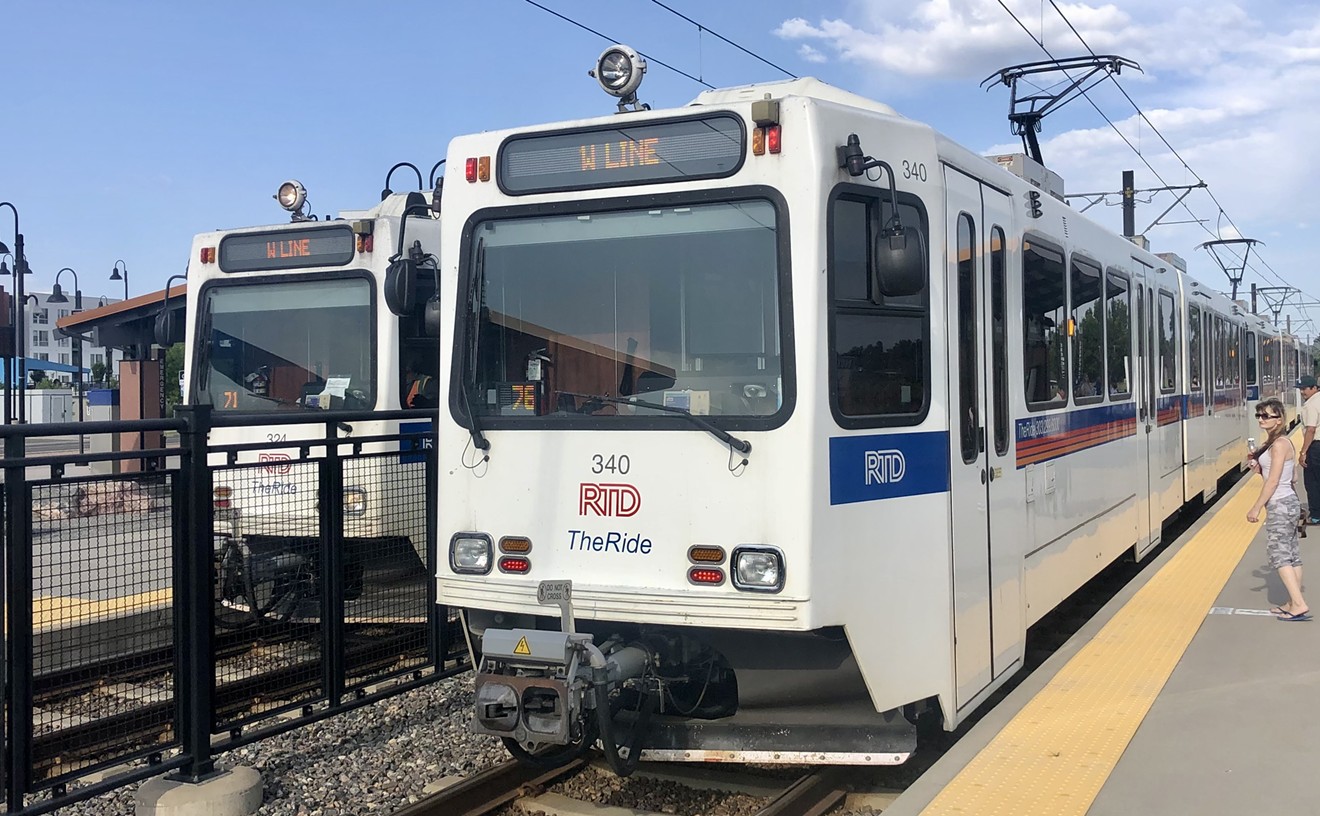Cars filled the 1,400 spaces in the lots outside the main zoo entrance and in front of the Denver Museum of Natural History. Roughly 200 more cars were lined up along the shoulders of 23rd Avenue, the road that separates the park from City Park Golf Course.
It's a congested scene that's long plagued the four million annual visitors to the two institutions that share City Park, and it's likely to get uglier as additional zoo and museum attractions draw more visitors. City Park neighbors have been pleading with city officials for three years to solve the problem, but until recently have gotten nowhere.
In November 1998, voters approved a $98.6 million bond for neighborhood projects such as additional police stations and improved libraries and recreation centers throughout the city. The bond also included $6.9 million for City Park improvements; $3 million was set aside for additional parking, $3.1 million was earmarked for changes to 23rd Avenue (such as adding curbs and gutters, widening the lanes and erecting entry monuments). The rest was intended for other upgrades, including the restoration of the boat dock and fountain at Ferril Lake.
Even though some money was finally made available for parking, neighbors weren't exactly jumping for joy; still no specific parking solutions had materialized. Finally, in January 1999, Denver's Parks and Recreation Department started working with neighborhood groups and the museum and zoo to develop the City Park Land Use and Circulation Plan, which was meant to find ways to open up previously closed entrances to the park, improve roads and add parking.
Last November, City Park was assured even more money for parking when voters approved a $62.5 million bond to help pay for a ten-year redesign of the zoo -- the bond included $5 million for parking, and the zoo and the museum pledged to raise another $2.5 million each.
Shortly after the 1999 bond passed, the city parks department unveiled two possible parking scenarios: One was to rebuild the existing surface lot near the main zoo entrance and add 300 to 600 more spaces. Since those spaces wouldn't have been enough to accommodate visitors on peak days, however, the city also proposed building a shuttle lot somewhere outside the park. Neighbors were furious over the idea, because adding more spaces at the main zoo parking lot would have required removing more than 130 mature trees. The second scenario called for a modest parking garage that would uproot only 65 trees. Neighbors didn't think the second plan alone would suffice, either; they wanted the city to build underground parking structures with enough spaces to accommodate projected increases in use.
Georgia Garnsey, a City Park neighbor who's attended countless public hearings on the parking issue, says the zoo and the museum have a pattern of borrowing from park land for their own purposes. In 1985, trees were removed to make way for the museum's boiler plant, and additional wings were built without any public input. The same year, a soccer field in the park was annexed to the zoo so that the Tropical Discovery exhibit could be added.
Garnsey had been critical of both of the city's parking plans, and she and other neighbors weren't expecting much when they went to the final public hearing on the Land Use and Circulation Plan on February 29. But much to their surprise, city officials backed off their earlier proposals and were pushing instead for building one or two unobtrusive parking structures.
"We've worked very closely with the museum and zoo to determine how big the crowds are there, and we know we're short 400 to 800 parking spaces on at least 150 days a year between May and September, when the park and institutions are the busiest," says Susan Baird, a landscape architect with the parks department and the project manager for the land-use plan. "Right now, the parking lots can hold 1,400 cars; we want to plan for a minimum of 2,400 spaces."
It was difficult to find the necessary two acres that would have been required for shuttle parking and too hard to get people to use it, she says. "What we're recommending is...one or two parking garages on existing lots, although the location for the garages hasn't been set. We need to be ingenious and sensitive. We want to keep as many trees as possible and build as many underground parking levels as possible so that there will be minimal visual impact."
But since Baird estimates that parking garages with underground levels could cost as much as $8 million each, the city will need $16 million if it wants to build two. The bonds raised half of that, and the two institutions pledged another $5 million, but now they will probably need to raise more.
"I'm thrilled and shocked," Garnsey said the day after the meeting. "I was expecting more stonewalling. I'm not mad anymore."
City Park Administrator Harriet Hogue, whose position was created in November for the sole purpose of working with neighborhood groups and overseeing changes at the park, says that while the February 29 meeting was the culmination of the land-use planning process that began last January, it's only the start of solving the parking problem.
And while neighbors hailed last week's meeting as a victory, many are still concerned about some of the proposed improvements, such as the addition of lanes to York Street, which some residents say will increase noise and pose safety hazards, and the reopening of park entrances on the northwest side that were closed in the mid-1980s to prevent gang violence. Neighbors on that end of the park have been crying foul for years, and park officials have recognized that blocking those entrances was discriminatory, Baird says.
Parks and Recreation advisory-board members have said they'll look into all of the neighbors' remaining concerns; they plan to submit their final recommendations to Parks and Recreation Manager B.J. Brooks in April.










